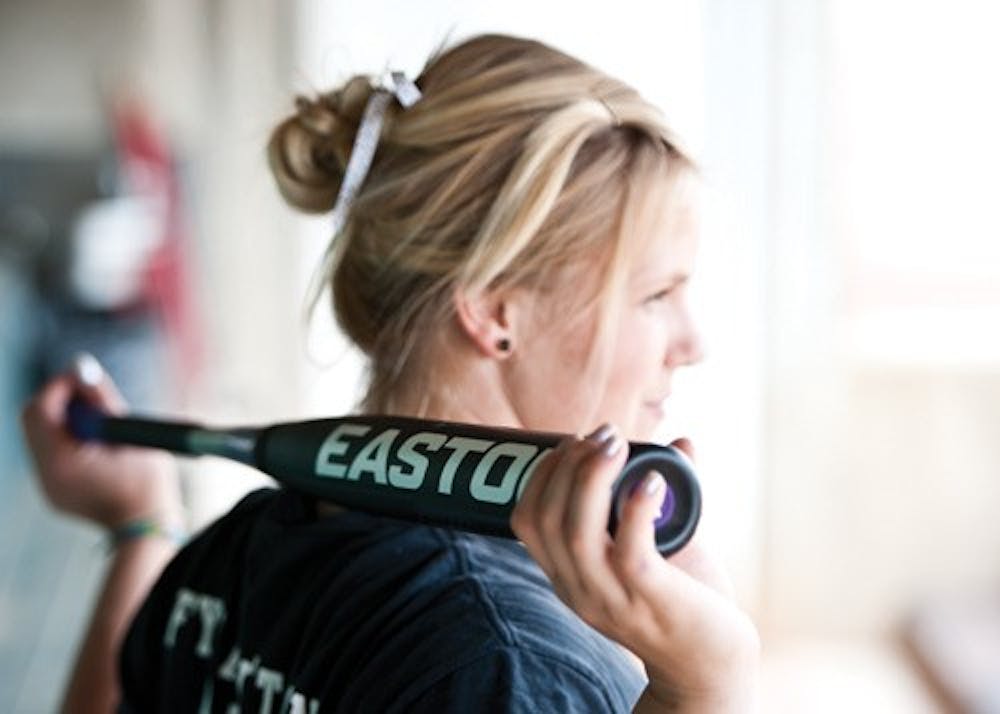Escalating home run totals prompted college baseball and softball officials to restore some normalcy to the sport by changing the bats.
The NCAA introduced a plan in 2010 to make the sports more balanced by having players use BBCOR — Batted Ball Coefficient of Restitution — bats. The bats have a 10 to 15 percent decrease in power capacity compared to the old BESR bats that provided more “ding” for the buck.
But through almost two complete seasons of use in each sport, the bats have not had the same effect for baseball and softball for all teams in the Mid-American Conference.
“Those (bats) were really hot,” Ohio baseball coach Joe Carbone said. “The weight had to be three ounces within the length, but you didn’t play much small ball anymore because you had guys who could really hit the ball out of the ballpark.
“We recruited to that — we had Marc Krauss, Gauntlett Eldemire, Robert Maddox — (Jensen) Painter’s home run total would be in the high 20s if we had those bats right now.”
Switching bat technologies had contrasting effects on baseball and softball.
With BESR bats in 2010, Ohio softball hit only 33 home runs, while the Ohio baseball team hammered a conference-leading 79 bombs. On the other hand, last season Ohio softball set a program record with 35 home runs while Bobcat baseball saw its totals decrease by more than half to 32. No MAC baseball team hit more than 40 longballs in 2011.
The difference in output from the same technology are largely unknown, but the answer might boil down to just the bats.
“We have been looking to recruit players who can help increase our power numbers,” Ohio softball coach Jodi Hermanek said. “But, technology for our sport is always a large factor on how the game is played. These bats are definitely different.”
At Ohio Softball Field, the center-field fence is only 210 feet away from home plate, while the deepest part of Bob Wren Stadium is almost twice the distance of softball, at 405 feet.
BBCOR bats do not flex as much as the now-banned composite BESR bats do, which allows for less energy to produce long hits and accounts for the different effects in each sport, according to Easton, Ohio softball’s official bat supplier.
The lower flex helps make the bats more durable over time and does not allow for any breaking in, which was a major factor of highly inflated home run numbers in baseball. But less flex allows for more line drives, proving beneficial for softball, as players can still get the ball over the fence. The much greater distance required to hit a home run in baseball means that home runs are not as likely.
“Honestly, I was not really aware that the bats had changed,” Ohio softball player Lauren Gellerman said. “I think I, myself, have just progressed as I have aged. The bats have not affected me to my knowledge.”
Gellerman, along with teammate Raven King, hit 13 home runs apiece this year to break Ohio’s single-season individual record and helped to break the team record for the second season in a row.
Softball teams are seeing power numbers on the rise across the MAC. Squads have from averaging 30 home runs in 2010 to almost 35 in 2012, MAC baseball teams numbers have plummeted to only 28 per team a season after an average of 52 with the BESR bats.
In 2010, the Bobcat baseball team had five players hit seven or more home runs. With only two games remaining on the schedule this season, only senior Jensen Painter has more than seven home runs, as he has gone deep 14 times.
cl1027410@ohiou.edu






